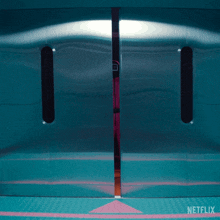To avoid the worst effects of climate change, action must be taken against it. The most effective way to do that is to get at the root of the problem and greatly reduce global greenhouse gas emissions. Currently, energy production accounts for 75% of those emissions and relies mostly on fossil fuels[1]. Therefore, to limit emissions from energy production and consequently the impacts of climate change, fossil fuels must start being phased out.
Fortunately, there are many solutions for limiting global emissions from energy production. They include the creation of solar panels, wind turbines, hydroelectric dams, wave energy converters, and other such machines.
However, renewable energy sources alone cannot provide all the energy the world needs so that emissions from fossil fuels can be eliminated. The sun does not always shine, the wind does not always blow, and hydroelectric dams can be very damaging to the environment (they can also cause earthquakes). So, what can be added to this mix of sustainable solutions to help prevent the worst effects of climate change?
Nuclear power!

Photo by Getty Images from Unsplash
Nuclear power, even with its downsides, can be of great help in the fight against climate change. It provides massive amounts of power day in and day out and is a much better option than fossil fuels. In fact, when it comes to energy, almost nothing is as bad as fossil fuels are for the environment and the general well-being of humanity.
However, how is that possible when horrific disasters such as Chernobyl and Fukushima have occurred? First of all, the Chernobyl disaster directly killed 50 people from radiation exposure, though other estimates do put the long-term deaths in the thousands[2]. For the Fukushima disaster, only one person died from radiation. The rest of the casualties came about because of the stress from the evacuation and the tsunami that created the disaster in the first place[3].
These numbers become negligible when compared to the death toll from fossil fuels. Fossil fuels cause the deaths of 8 million people every year because of the pollution they create, not to mention the full effects of climate change. In fact, fossil fuels kill so many people each year that they are now the second leading cause of death worldwide[4].

Photo by Getty Images from Unsplash
However, there are still many downsides to nuclear energy. One of them is that there will be more nuclear disasters in the future, and quite possibly the not-too-distant future either. Accidents at nuclear power plants that cost more than 20 million dollars to fix are occurring at a rate of 0.002 to 0.003 events per plant per year.
That means there is a 50% chance that a Fukushima event or larger occurs in the next 50 years. For a Chernobyl-scale event there is a 50% chance of one occurring in the next 27 years[5].

Photo by Viktor Hesse from Unsplash
Another problem with nuclear power is the storage of nuclear waste. Today, all nuclear waste is being stored in highly secure containers such as dry casks but even this precaution does not completely eliminate the possibility of a leak.
Luckily, there have been no recorded deaths from failed nuclear waste containers and scientists are looking into creating boreholes to dump all the radioactive materials into[6]. While this does not seem like a good idea, boreholes are very deep (around 5 km deep) and even if a container filled with nuclear waste did burst, it would only affect the bacteria living nearby and nothing on the surface[7].
Also, there is a type of nuclear reactor called the fast reactor that can use nuclear waste as fuel to produce energy, greatly reducing the amount of nuclear waste in the first place[8].
In fact, considering that nuclear energy is so much safer than fossil fuels, it could be argued that nuclear energy has prevented millions of deaths. Nuclear power causes so few deaths while fossil fuels go all out.

Photo by Photoholgic from Unsplash
This information directly goes against the belief that nuclear power plants can lead to the proliferation of nuclear weapons. The idea that nuclear reactors and nuclear weapons are at all connected is simply not true. There is no historical evidence for this belief. The reason for this is simply that there are much easier ways to get plutonium for nuclear bombs than through a scheme involving nuclear reactors[9].
Now after reading all that, you might be wondering why nuclear power is not more widespread and increasing in global availability. Part of the reason is that there are still many people that disapprove of nuclear reactors, but the main reason is the cost of building a new one.

Photo by Getty Images from Unsplash
Nuclear reactors cost tens of billions of dollars along with decades of work. The world can’t rely on energy that will come that far into the future. Emissions must start dropping now.
The solution to this problem is to turn away from the usual nuclear reactors (known as pressurized water reactors) and instead look at Small Modular Reactors. Small Modular Reactors are essentially mini nuclear reactors that are much cheaper and much easier to build. These reactors could be spread easily all over the place and mass produced in factories[10].
However, if you are still concerned about nuclear waste, nuclear meltdowns, and other such accidents that release highly radioactive materials, there is a new type of reactor that does not have to deal with these problems as much: the Thorium reactor. Thorium is a radioactive element that is 3 to 4 times more abundant than uranium and widely distributed around the world, making it much more accessible to everyone11.
Thorium reactors have the advantages of producing far less waste than other reactors, and the small amount of waste they do create remains dangerously radioactive for a relatively short period of time. A Thorium reactor also can be used to produce far more energy than a reactor using uranium. The disadvantage for thorium reactors is that they are still in the experimental phase. China, though, has already built a working thorium reactor for testing so the technology is not too far into the future[11].
Nuclear energy, while having some major disadvantages and problems, is still a good and necessary solution to providing huge amounts of clean energy and preventing greenhouse gas emissions. Combined with renewable energy sources and advances in nuclear technology, the world can greatly reduce its greenhouse gas emissions and fight back against the catastrophic effects of climate change.
For the well-being of the planet.

Photo by Pine Watt from Unsplash
Sources:
[1] Energy Mix - Our World in Data
[2] The true toll of the Chernobyl disaster
[3] What was the death toll from Chernobyl and Fukushima? - Our World in Data
[4] Air Pollution Ranks 2nd Risk Factor of Deaths Globally | Earth.Org
[5] The Chances of Another Chernobyl Before 2050? 50%, Say Safety Specialists | MIT Technology Review
[6] Backgrounder On Dry Cask Storage Of Spent Nuclear Fuel | NRC.gov
[7] Nuclear waste: Bury nuclear waste down a very deep hole, say scientists | ScienceDaily
[8] Fast Reactors Provide Sustainable Nuclear Power for "Thousands of Years" | IAEA
[9] Nuclear power - Proliferation, Safety, Regulation | Britannica
[10] The Impact of Small, Highly Efficient, and Cheap Nuclear Reactors on Developed Economies: A Focus on Energy Costs and Transportation
[11] Thorium’s Long-Term Potential in Nuclear Energy: New IAEA Analysis | IAEA









